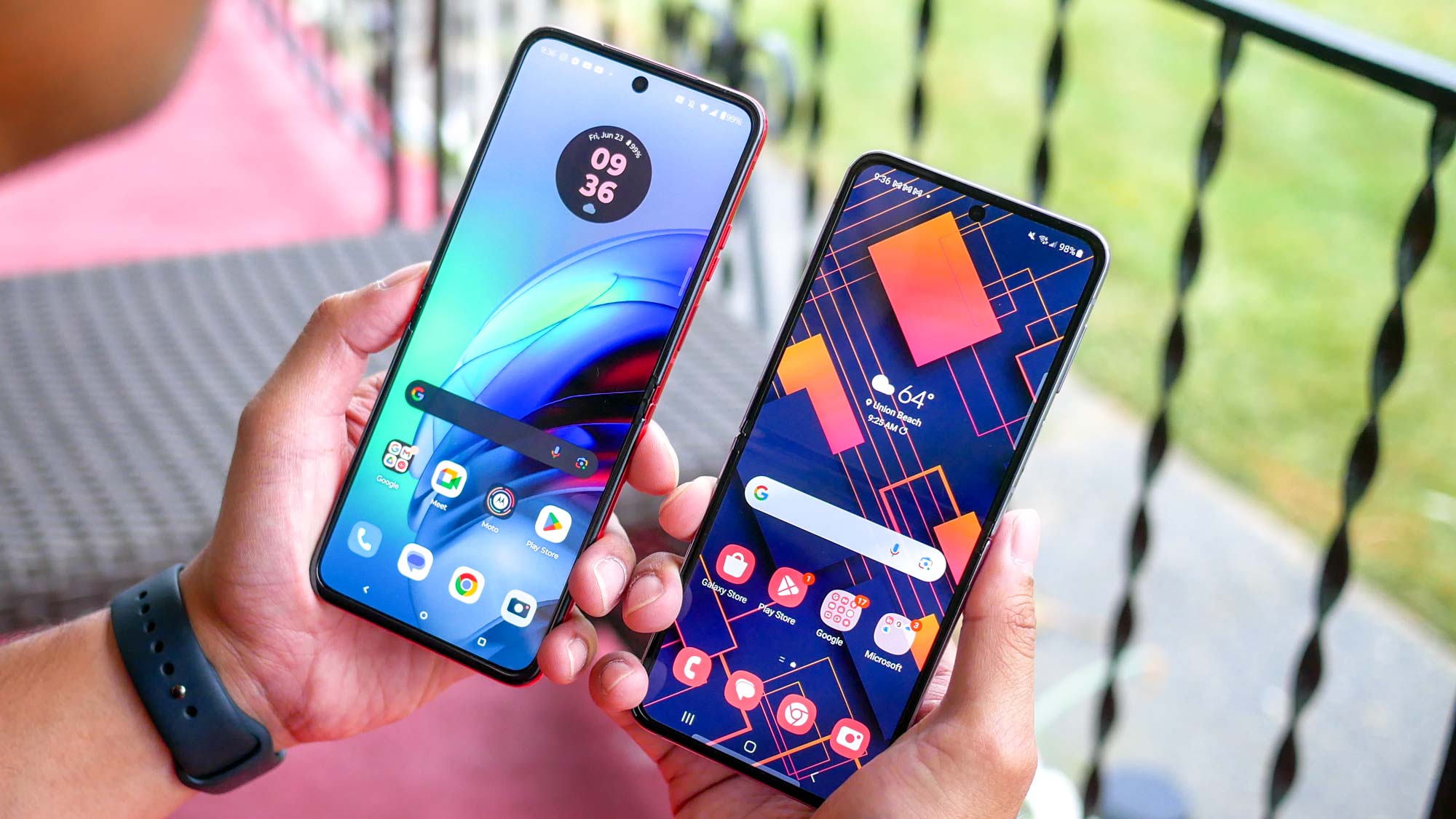
Motorola's latest swing at a foldable device, the Motorola Razr+ is easily the best designed flip phone to date. The larger external display paired with the Razr's dual-camera system are a boon for content creators and vault the Razr+ ahead of Samsung's established foldable.
For
- Gorgeous design
- Detailed external display
- Speedy battery recharge
Against
- Underwhelming low-light photos
- Some apps don’t scale well on external display
The Galaxy Z Flip 4 has a lot of refinements over its previous iterations, highlighted by a slimmer, lighter hinge and flatter edges. But while it has the better cameras than the Razr+, its smaller exterior display puts the Flip 4 at a disadvantage.
For
- Improved battery life
- Sub-$1,000 price
- Great performance
Against
- Minimal camera upgrades over previous models
- Display crease still prominent
Things are taking a fun turn in the world of foldables as illustrated by our Motorola Razr+ vs. Samsung Galaxy Z Flip 4 face-off. There hasn’t really been a serious contender to the Samsung Galaxy Z Flip 4 here in the U.S. since the latest version of Samsung's flip phone-style device debut last fall at a comfy sub-$1,000 price. That’s until now.
With the launch of the Motorola Razr+, it looks like we may finally have a worthy alternative that can give Samsung heated competition. There’s no denying that the two foldables offer an attractive package for their unique folding abilities and features, proving to us that they’re the future — and more importantly, phones are fun once again.
After spending months using the Galaxy Z Flip 4, I’ve only recently made the switch to the Razr+ to see how it stacks up against one of the best foldable phones around. Honestly, it’s a close call because there are several things I love about both phones, but as you’ll see in my Motorola Razr+ vs. Samsung Galaxy Z Flip 4 comparison, it was ultimately the one with the most utility that came out on top
Motorola Razr+ vs. Samsung Galaxy Z Flip 4: Specs
Motorola Razr+ vs. Samsung Galaxy Z Flip 4: Price
Both foldable phones are priced at $999.99. However, there are deals going on right now for the Motorola Razr+ that makes it more irresistible. For example, AT&T’s offering customers the Razr+ for as low as $5/month with a 36-month agreement, which brings down its total cost to a mind boggling $180. That’s unheard of when we’re dealing with a foldable that just launched.
Meanwhile, there are also a handful of Galaxy Z Flip 4 deals, but they’re nowhere as generous. Samsung’s giving buyers between $20 to $745 in instant trade-in credits, dropping the phone's cost as low as $255. Unlike the Razr+, you’ll need to do a trade-in in order to receive these discounts.
Winner: Motorola Razr+
Motorola Razr+ vs. Samsung Galaxy Z Flip 4: Design
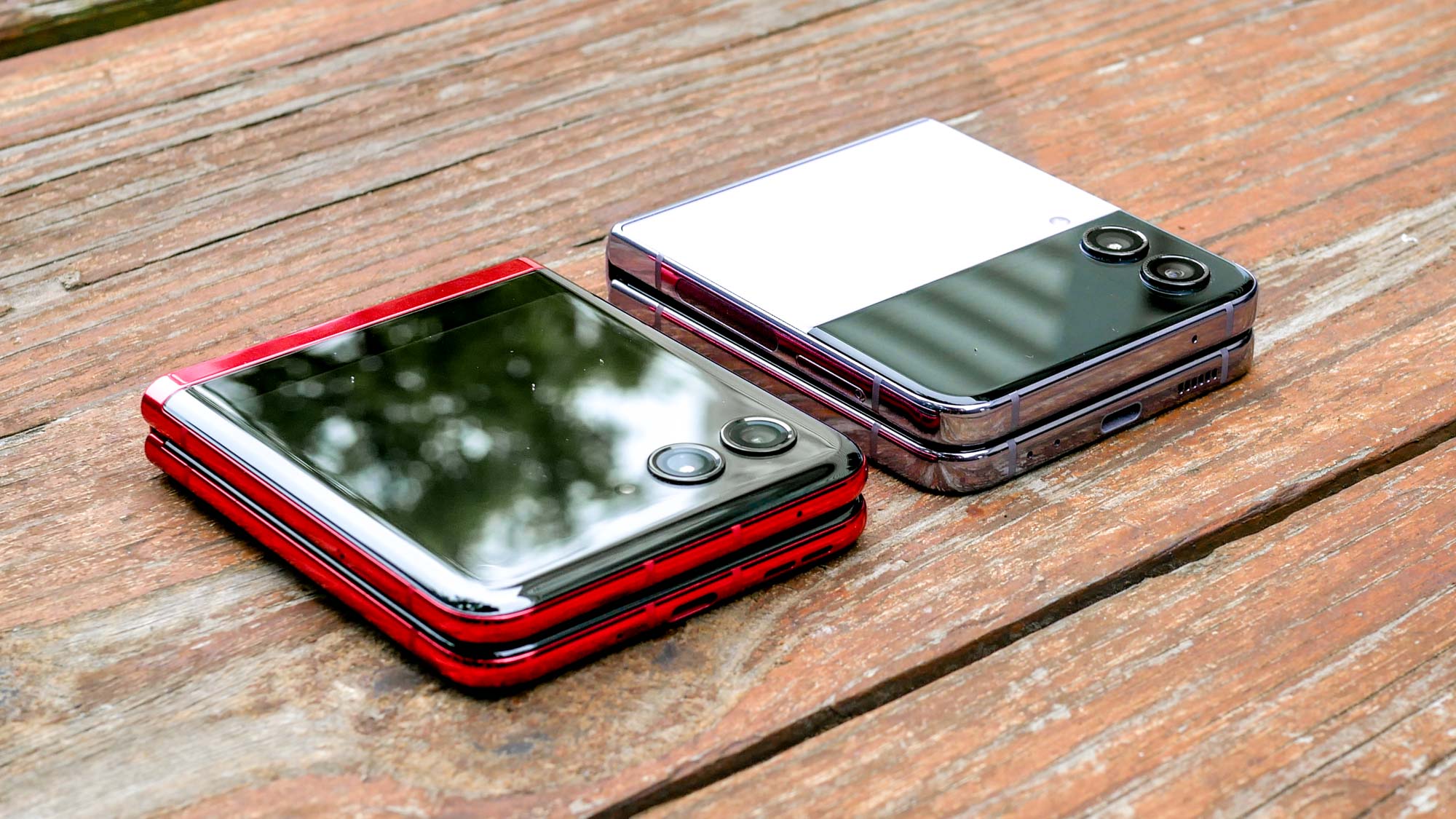
Aesthetically, there’s a lot of charm and character with the design of both foldables. They’re roughly the same size and weight, and I found it easy to stow away both devices in my pockets when they were folded over. The Galaxy Z Flip 4 has a flatter metallic bezel outlining the phone, while the Razr+ felt more comfortable to hold in my hand because of how its bezel was rounded.
They share a lot of design cues, too, like how their side-mounted power buttons double as the fingerprint sensor. However, there’s just something about the Razr+’s contrasting metallic frame and vegan leather casing that gives it the style edge. It’s not to say that the Galaxy Z Flip 4 isn’t attractive, especially when you can customize the paint job with the Bespoke edition of Samsung's phone. I just found more people giving me looks using the Razr+ in public than the Galaxy Z Flip 4.
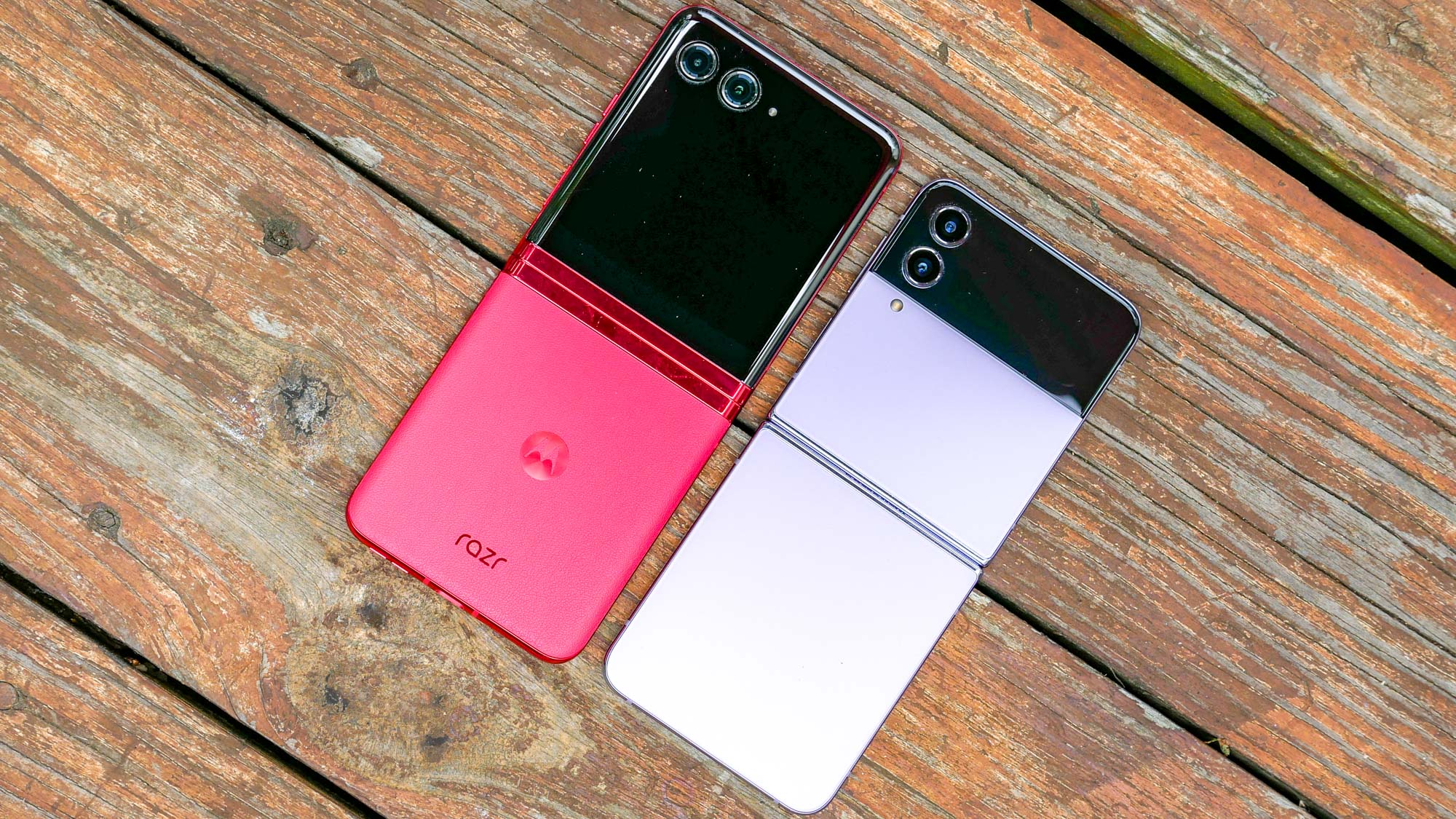
Unless you plan on going swimming a lot or using your phone in the shower, you’ll want to stick with Samsung’s foldable because of its IPX8 rating. That ensures it’ll be protected from splashes and submersion up to 4.9 feet (1.5 meters) for up to 30 minutes. In comparison, the Razr+ has an IP52 rating, which is good enough against water splashes, but not submersion.
Winner: Motorola Razr+
Motorola Razr+ vs. Samsung Galaxy Z Flip 4: Display
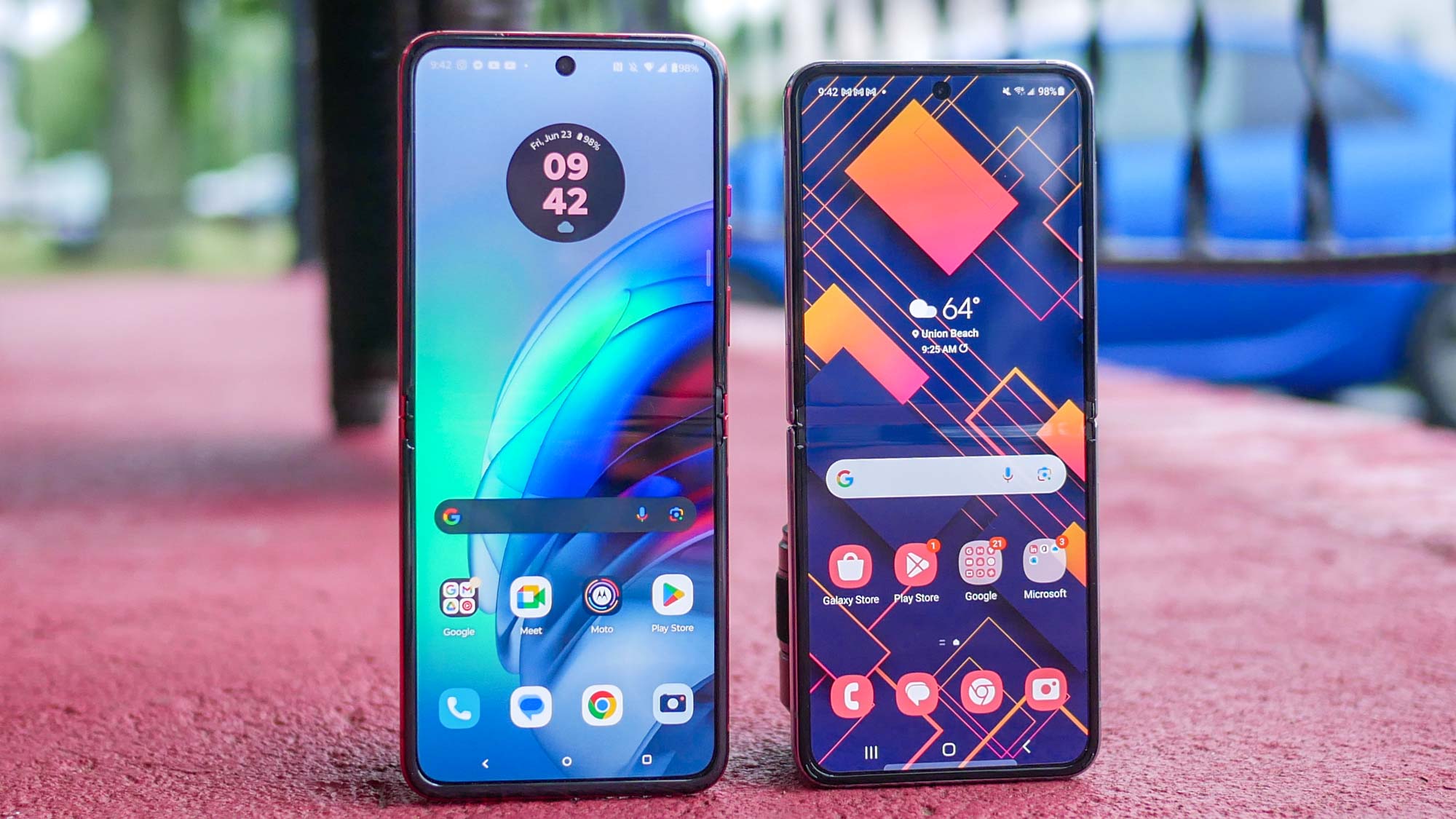
The main displays of either foldable are a sight to behold, even though their respective creases are visible when the displays are off. I would say that it’s more apparent on the Galaxy Z Flip 4, but that’s understandable given that I’ve been using it for much longer. But you know what? I didn’t find the crease to be an issue for everyday stuff like watching videos and sending out emails.
The specs favors the Galaxy Z Flip 4’s 6.7-inch 2640 x 1080 Dynamic AMOLED display — resulting in a pixel density of 426 ppi (pixels per inch). The Razr+ isn’t too far off with its 413 ppi pixel density, which is only less because of its larger 6.9-inch 2640 x 1080 pOLED display. Visually, both interior displays are the same when it comes to details, wide viewing angles, and superb color saturation.
While their displays command a lot of attention, I found the Razr+ display to be better for outdoor use. That’s because its display peaked out at 1,084 nits, making it much more visible under sunny conditions, while the Galaxy Z Flip 4’s display reached 772 nits in our testing.
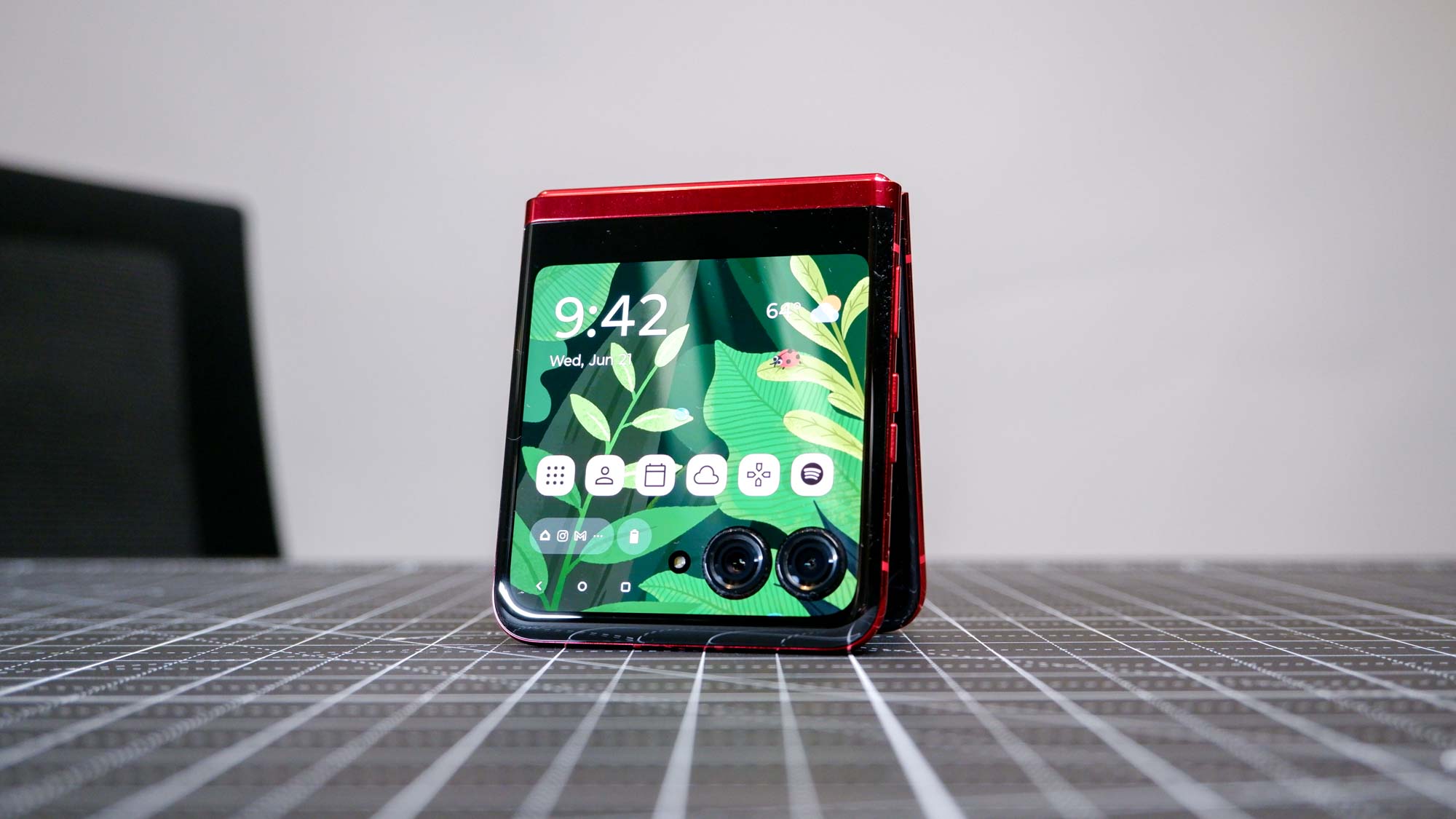
Even though it was a close match for their main displays, it’s a runaway win for the Motorola Razr+ when we look at their external panels. Essentially, you’re getting a larger, more usable 3.6-inch 1066 x 1056 pOLED display, which essentially allowed me to do nearly all of the same functions I could do on the Razr's main display. This adds a tremendous amount of utility, partly because I was able to run apps on the external display — while giving me better framing when capturing selfies with the rear cameras.
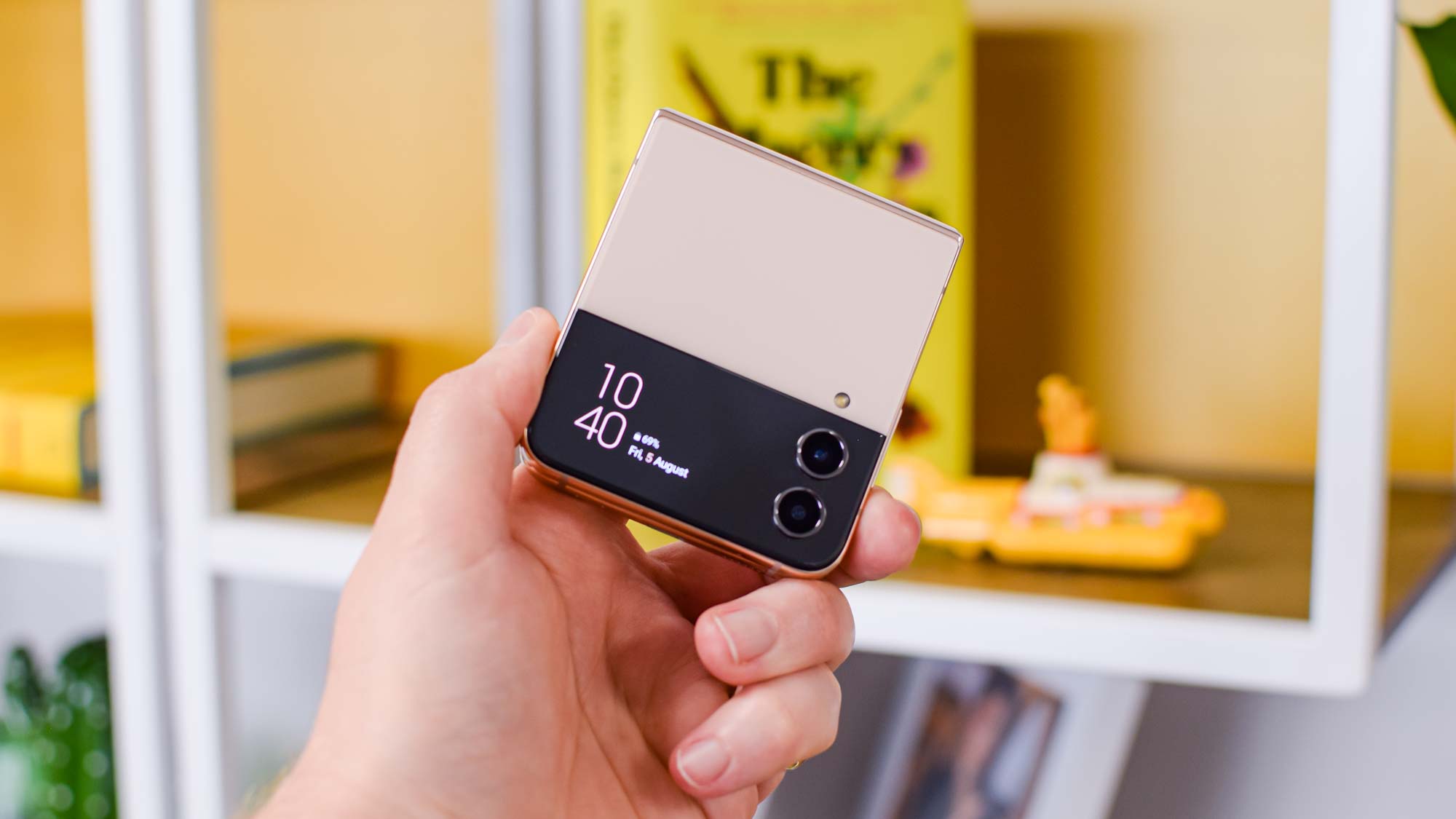
In contrast, the 1.9-inch Super AMOLED Cover Display on the Galaxy Z Flip 4 is tiny. Sure, I found it useful to quickly access things without opening the phone, but the tiny space limited them to notifications and widgets. It also cropped the framing wherever I tried capturing selfies with the Cover Display.
Winner: Motorola Razr+
Motorola Razr+ vs. Samsung Galaxy Z Flip 4: Cameras
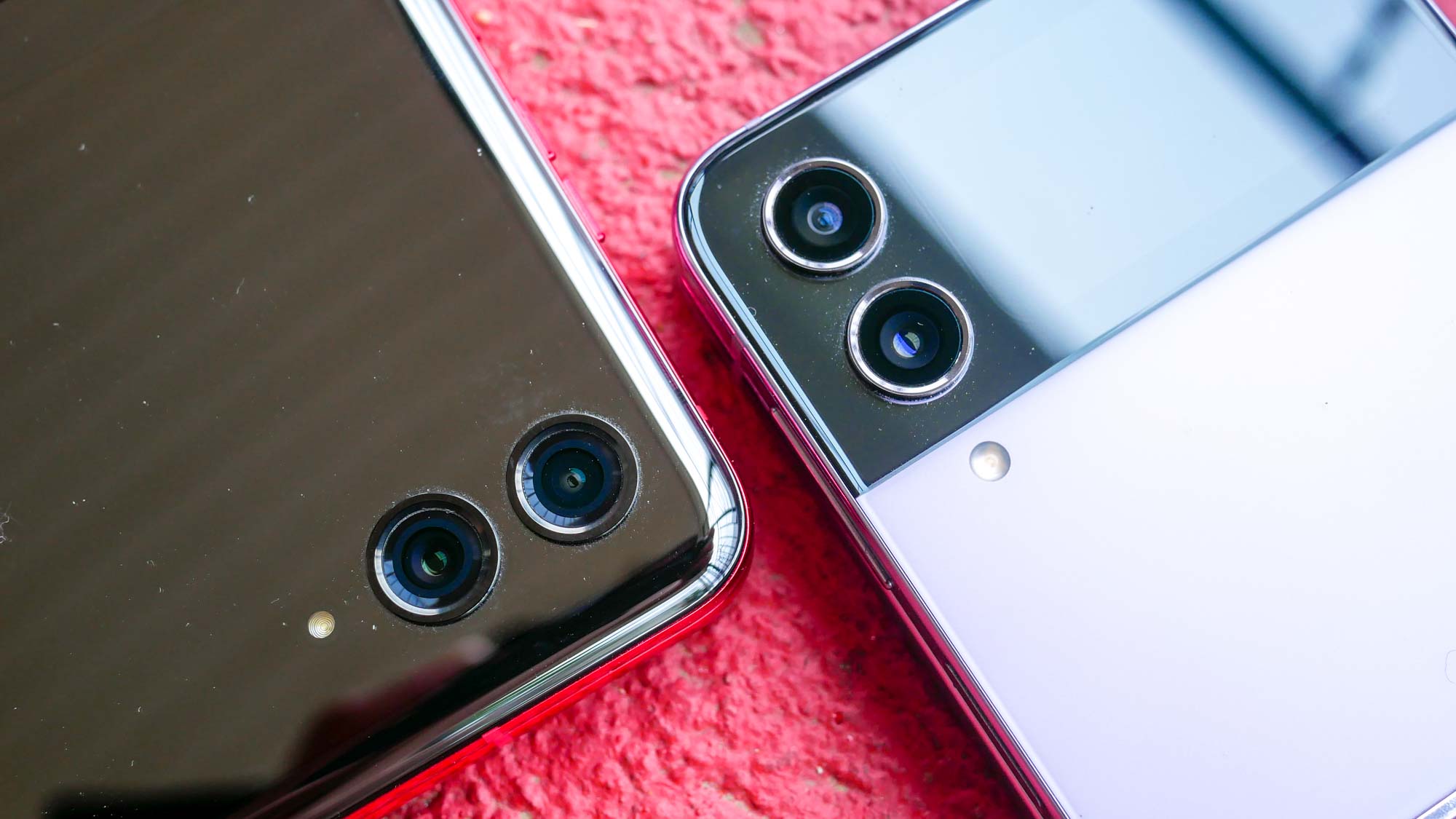
It’s another evenly matched fight between these foldables when you look at their cameras. Both are rocking dual cameras: a main camera and a secondary wider one, with a single LED flash accompanything them.
The Motorola Razr+'s combo consists of a 12-megapixel f/1.5 main camera and a 13-megapixel ultra-wide f/2.2 lens, while the Galaxy Z Flip 4 is outfitted with a 12-megapixel f/1.8 main camera paired with a 12-megapixel f/2.2 ultra-wide lens.
You’ll get more range out of the Galaxy Z Flip 4’s wide-angle lens because of its 123-degree field of view, which is more than the 108-degree field of view with the Razr+. Despite this, I honestly felt that the cameras performed very similarly. Apart from the greenish color tones produced by the Motorola Razr+, there wasn’t a substantial difference between either phone's output when shooting in ideal conditions. In fact, they produced nearly the same amount of details. The only other difference I could discern was that the Galaxy Z Flip 4 had slightly better dynamic range. It’s only by a little, though.
As you can see in the shot above, there’s just a greenish hue with the capture from the Motorola Razr+, making it unrealistic when compared to the more natural color tones of the Galaxy Z Flip 4.
Under low light situations, it’s a clear win for the Samsung Galaxy Z Flip 4, despite the Razr+ having a wider aperture lens to draw in more light. While I don’t consider either phone to specialize in low light, it’s hard to overlook the brighter, more exposed images captured by the Galaxy Z Flip 4; the Razr+ shots are darker and lack fine details.
The Razr+’s shortcomings were more profound when I switched to their respective night modes, which required both phones to stay as still as possible to draw in more light. You can easily see above how the Galaxy Z Flip 4’s night mode made the scene brighter, allowing more details to come out in the shadows. Sure, it might be an unrealistic representation of what I actually saw with my own eyes, but I still found it better than the murkier capture from the Razr+.
When it came to capturing selfies, I really enjoyed how I was able to use the better, rear cameras on either phone. You could still use their respective front-facing cameras, but you’ll get the best results by closing the phones and using the rear cameras with the external display serving as your viewfinder.
It’s a lot more convenient using the Razr+ due to its larger external display — more so when the cover screen of the Galaxy Z Flip 4 crops out a lot of things.
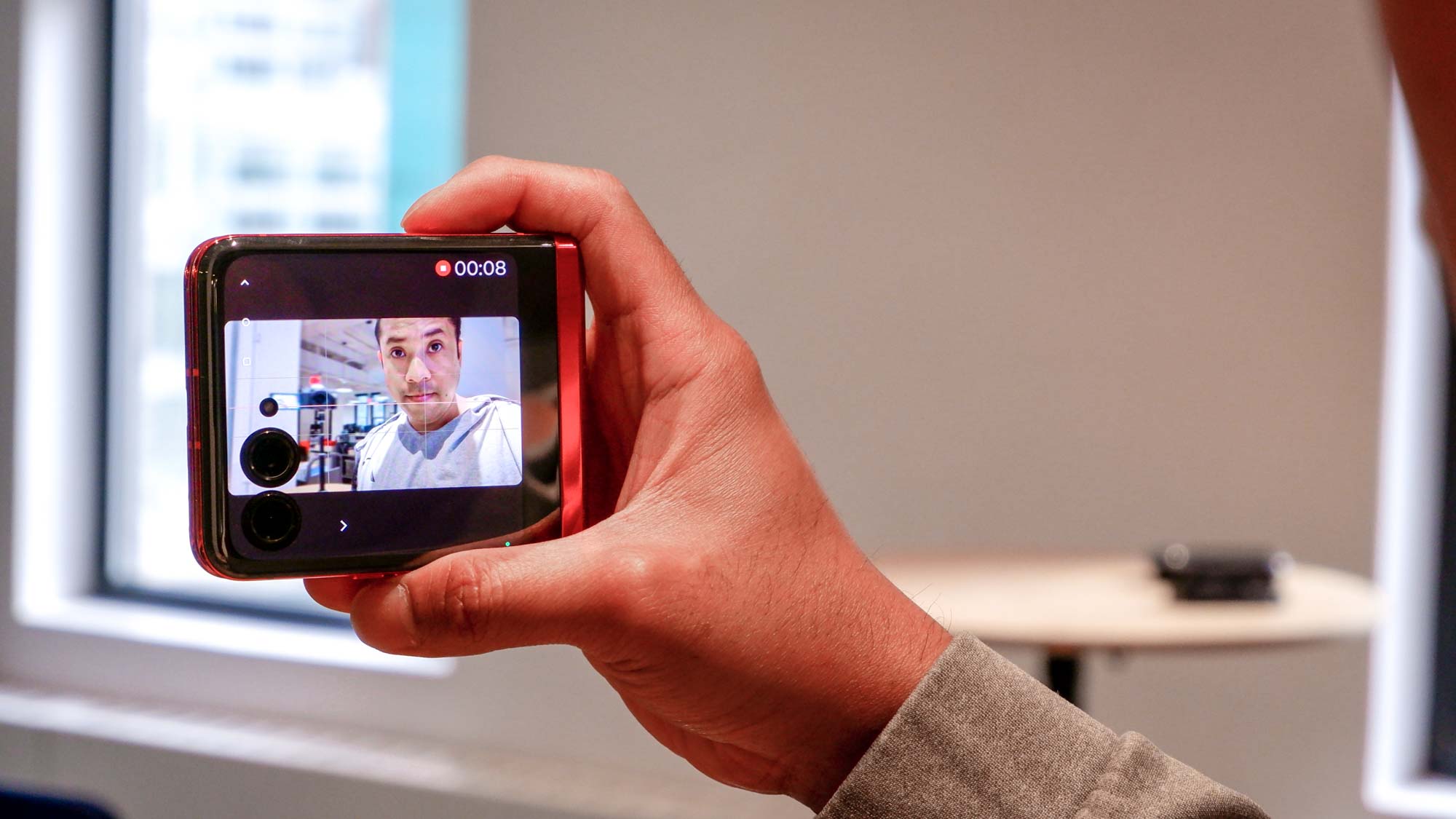
This brings me to how the Razr+ offers more utility for capturing content, since I could rely on the external display for self-recordings and vlogging. Strangely enough, I prefer the 4K video recording performance out of the Motorola Razr+ for the simple fact that footage from the Galaxy Z Flip 4 was over-sharpened. Additionally, they both top out at 4K recording at 60 FPS.
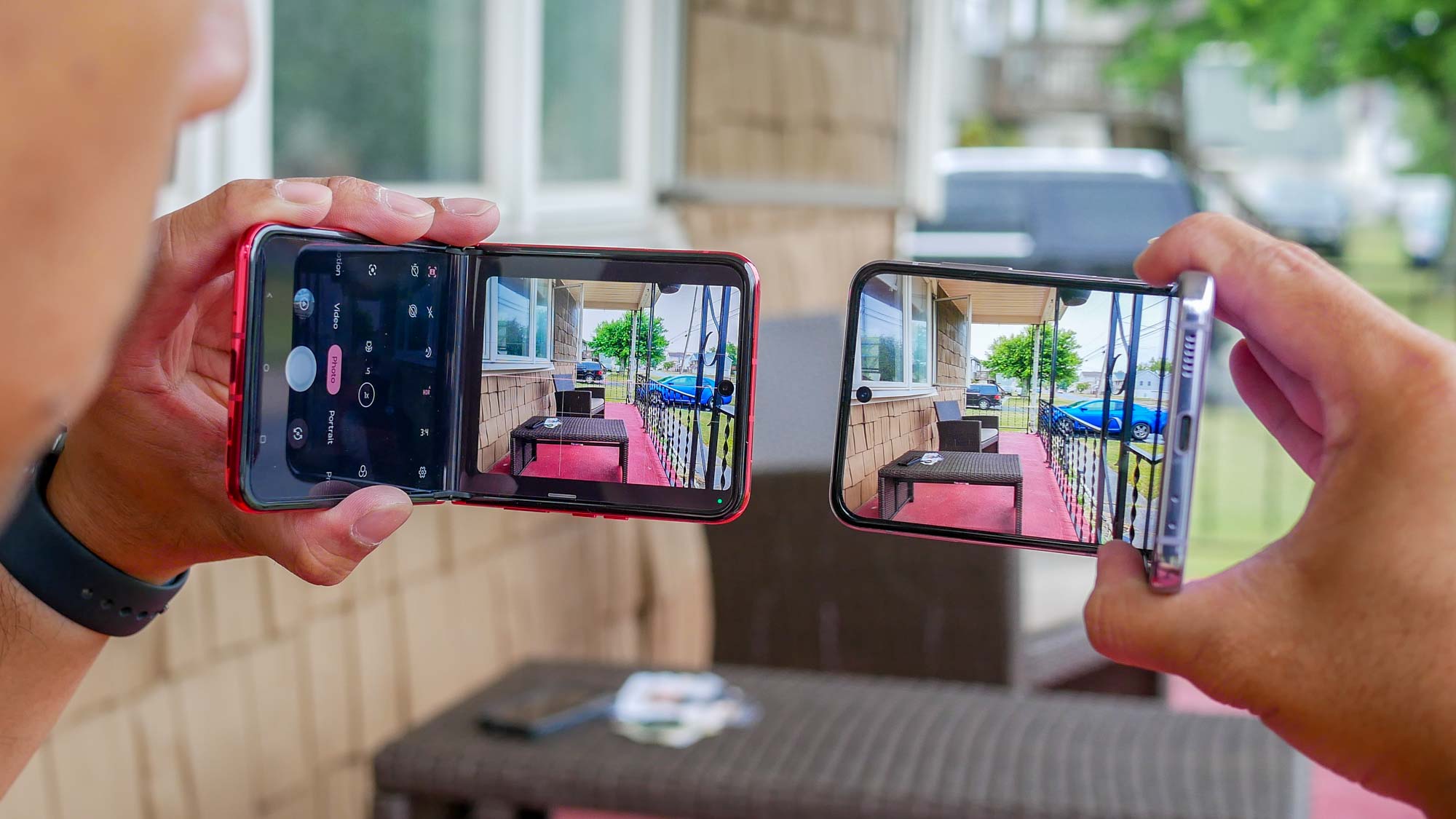
Being a videographer, I do like how there are manual video controls with the Galaxy Z Flip 4 to adjust parameters like the shutter speed, exposure compensation, and ISO. While they’re all handy for what I do, the average person is unlikely to use them all that much.
Winner: Samsung Galaxy Z Flip 4
Motorola Razr+ vs. Samsung Galaxy Z Flip 4: Performance
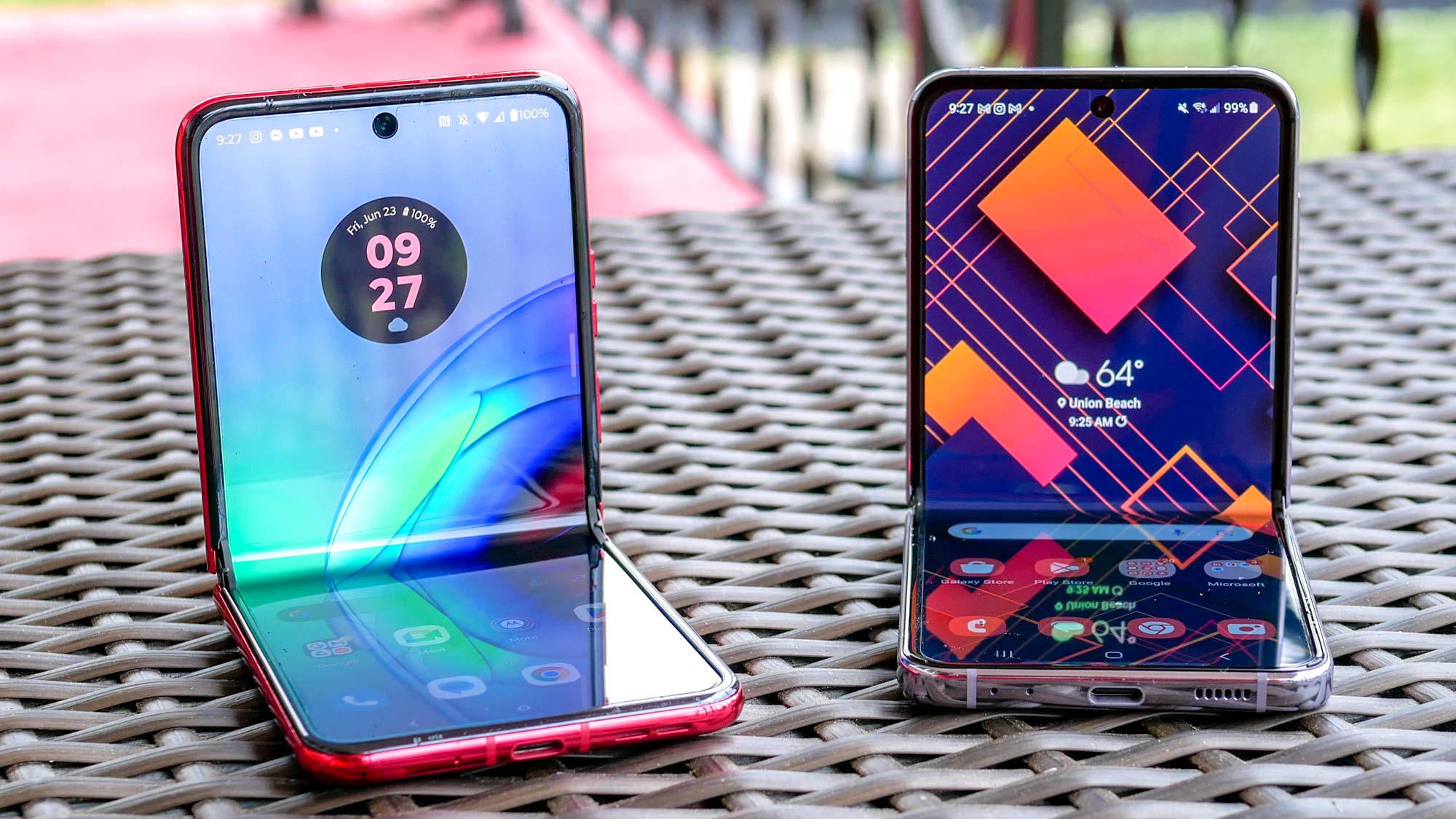
Most people would agree that it would be advantageous to have the latest and greatest hardware under the hood. But despite this notion, you have to remember that neither hardware or running benchmark tests are indicative to how a smartphone performs.
Both foldables are powered by Qualcomm’s Snapdragon 8 Plus Gen 1 chipset and accompanied by 8GB of RAM. It certainly looks like a stalemate on paper, but it’s hard to overlook Motorola’s decision to use this ‘older’ chip when other recent phones, like the Galaxy S23 series, were powered by the newer Snapdragon 8 Gen 2 chip. (At the time of the Galaxy Z Flip 4's release, the Snapdragon 8 Plus Gen 1 was the fastest chip available; presumably, the Galaxy Z Flip 5 coming later this summer will take advantage of Qualcomm's newer silicon.
Running benchmark tests revealed that there’s not a tremendous difference with their performances. The Razr+ achieved average score of 1,320 and 4,134 respectively on GeekBench 5’s single-core and multicore tests, while the Galaxy Z Flip 4 pulled in similar numbers at 1,291 and 4,015. They also maintained smooth frame rates of 66 frames per second when we ran the 3DMark Wilde Life Unlimited test for graphics processing. Likewise, both phones took 40 seconds to render a short clip in Adobe Premiere Rush.
They showed similar results with other basic functions, such as navigating around the interface, playing graphically intensive games, and the occasional web surfing. Most of their smooth actions were the result of the fast refresh rates of their main displays. The Motorola Razr+ technically has the faster refresh rate of 165Hz, versus 120Hz on the Galaxy Z Flip 4, but the performance was indistinguishable to my eyes.
Winner: Motorola Razr+
Motorola Razr+ vs. Samsung Galaxy Z Flip 4: Battery life and charging
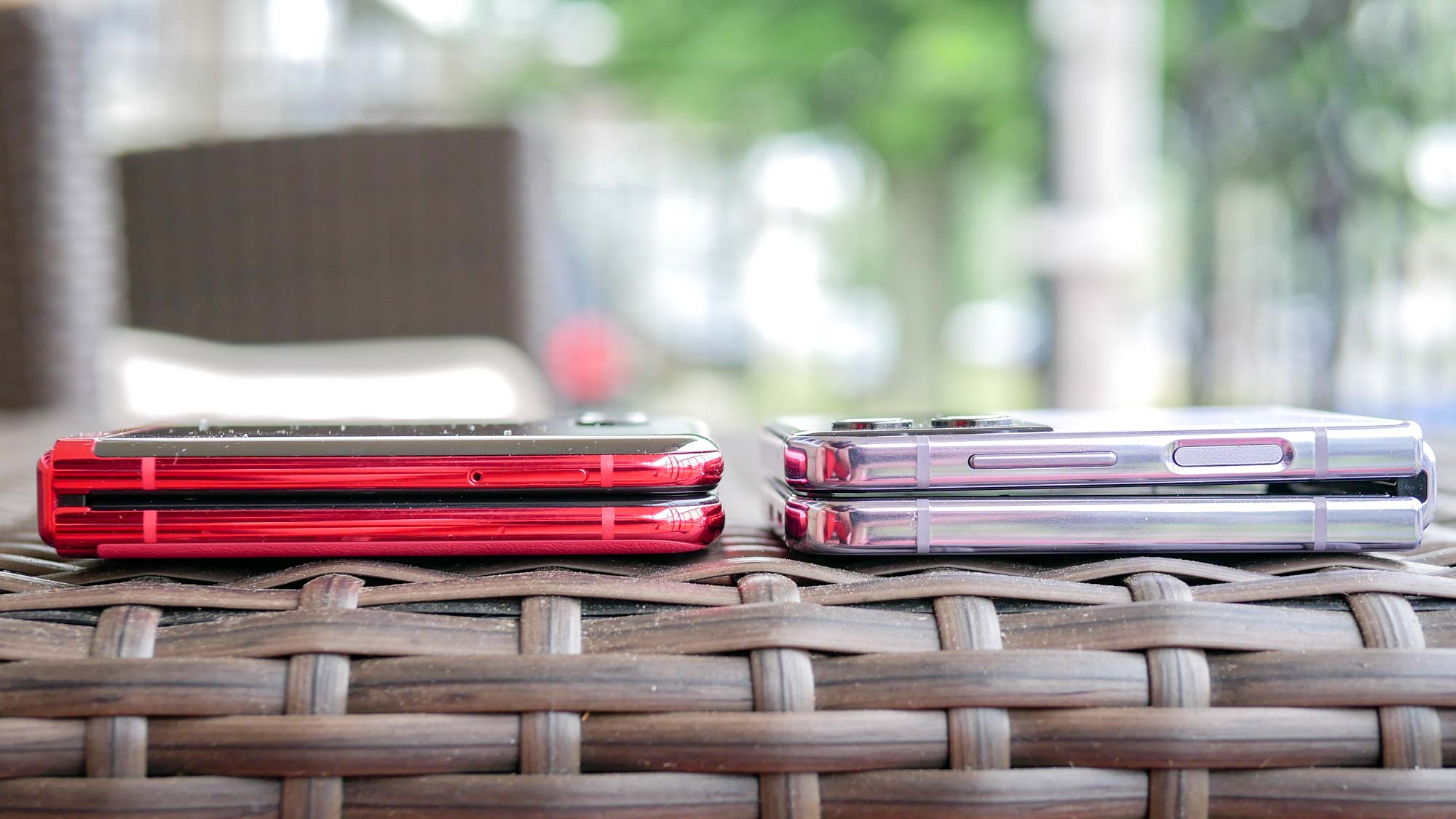
Due to their skinny frames, neither phone offers the long lasting batteries that more conventionally designed flagship phones deliver. At the very least, I’m happy to report that I got a solid one-day’s worth of battery out of the two — with the Razr+’s 3,800 mAh battery averaging out at 20% capacity before bedtime, while the 3,700 mAh battery of the Galaxy Z Flip 4 was less at about 10%.
Our own custom benchmark tests also revealed a win for the Razr+, since it lasted 10 hours and 9 minutes when tasked with surfing the web continuously over cellular. That’s an hour longer than the 8 hours and 59 minutes tally of the Galaxy Z Flip 4. Regardless, both phones will definitely need nightly charges.
Speaking of charging, you’ll be pleased to know that both offer wireless charging. If you’re in a pinch and need a lot of charge in a short period of time, then I’d recommend going with the Razr+ because its 30W Turbocharger juiced the phone to 35% after 15 minutes of charging — whereas the Galaxy Z Flip 4 got to 28% in the same amount of time.
Winner: Motorola Razr+
Motorola Razr+ vs. Samsung Galaxy Z Flip 4: Software
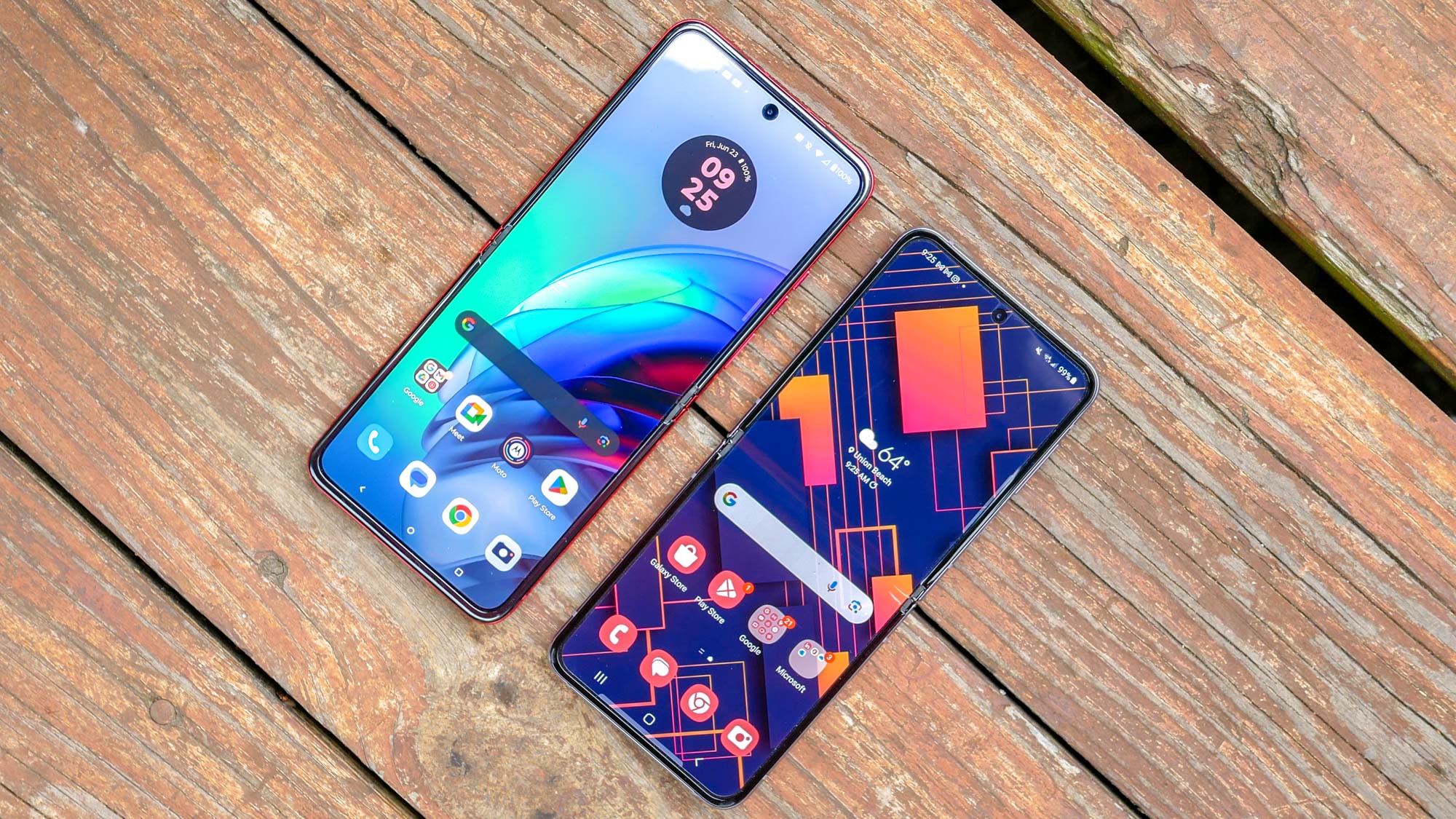
Fundamentally, you’re going to get that core Android experience with either foldable, but it’s the Motorola Razr+ that’s flaunting the utility I crave to get more out of my phone. You’ll like how the interfaces are as minimalist as they get, so there aren’t a lot of redundant customizations and features thrown on top of stock Android. The visuals of their interfaces are dramatically different either, giving you the choice of using Android’s gesture based interface or the more traditional 3-button menu.
There’s a lot to be said about the Razr+ in this area, partly because of the added boost of how the external display is leveraged. You’re basically able to do everything in Android using the main display, but on the smaller external one — allowing me to check my notifications, send out replies to messages, scroll through some of my favorite apps, and yes, even playing some games.
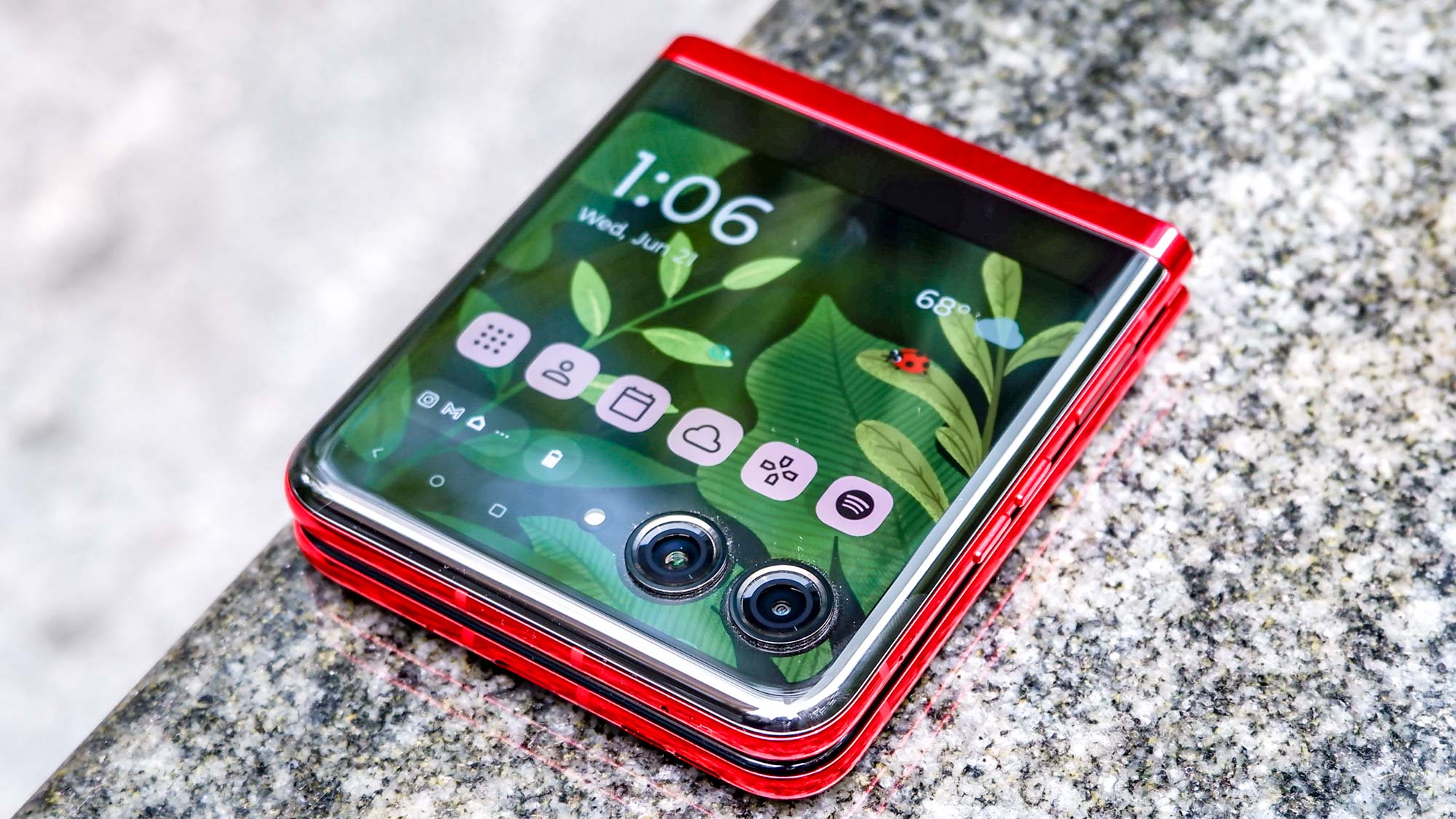
You’ll only be able to see notifications, access a few widgets, and take photos with the cover screen of the Galaxy Z Flip 4, which is why Motorola has the upper hand here. Furthermore, I also appreciate the other gestures that Motorola has continued to implement in its Android phones, like turning on the flashlight with ease by performing a double chopping motion with the Razr+.
Adding to this, there are a lot more personalization options at my disposal to make the external screen of the Razr+ more exciting with its dynamic wallpapers, clock faces, and much more.
Winner: Motorola Razr+
Motorola Razr+ vs. Samsung Galaxy Z Flip 4: Verdict
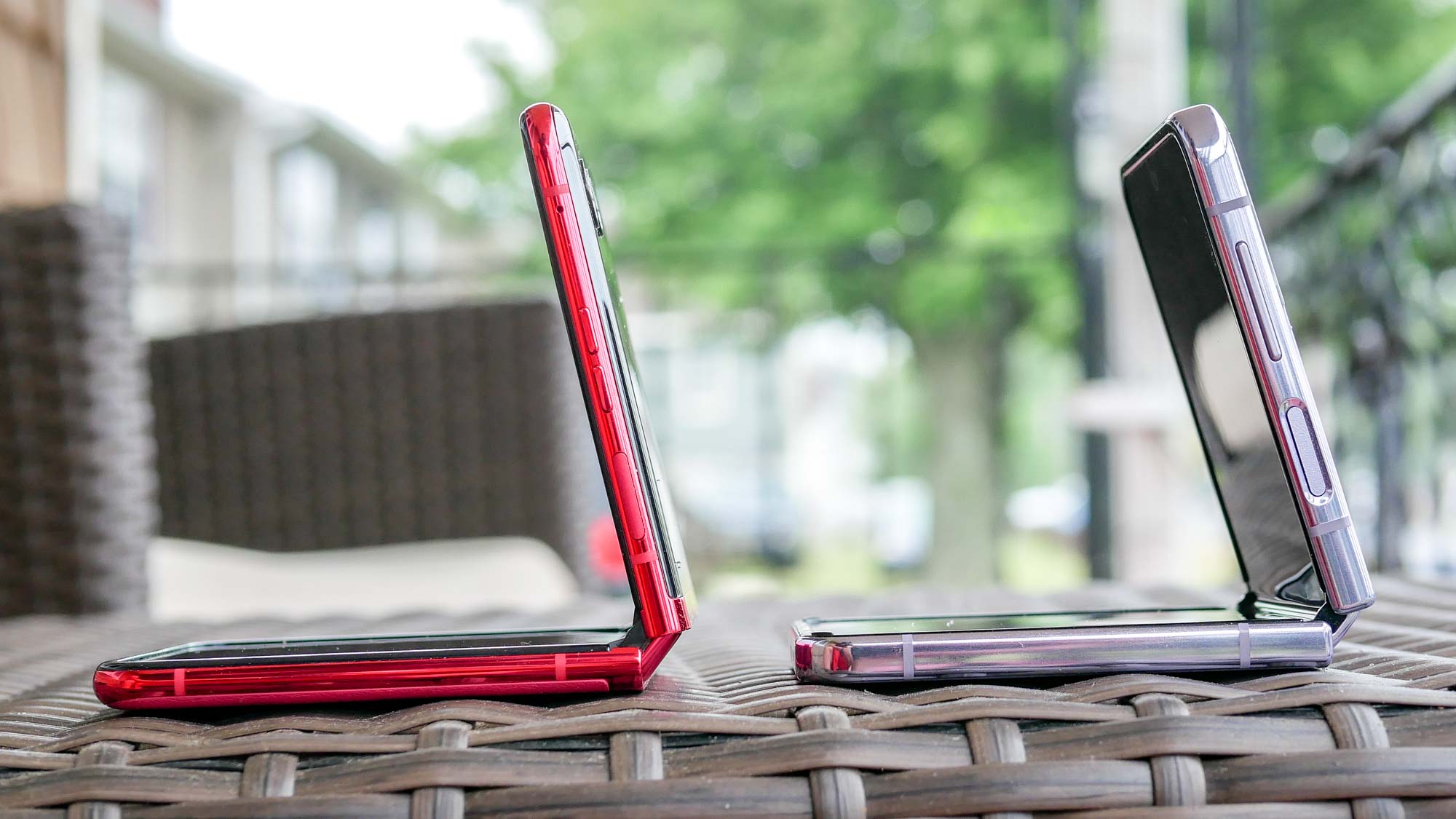
After two chances at trying to convince the world that the Razr line is a worthy contender, I’m happy to report that the Motorola Razr+ is finally the device we need in the foldable space. Even though it trailed Samsung's established foldable in a couple of areas, particularly its camera performance under low light and how the design isn’t as water resistant, the Motorola Razr+ made substantial progress in all the other areas to overthrow the Galaxy Z Flip 4 as the clamshell foldable king.
I was delighted most by the utility of the Razr+'s external display, like how I was able to run my apps through it — along with the ability to better frame photos and videos of myself. When you add all of those things up, paired with the generous discounts it’s getting, it’s hard to deny that the Motorola Razr+ is the superior foldable at this very moment.







